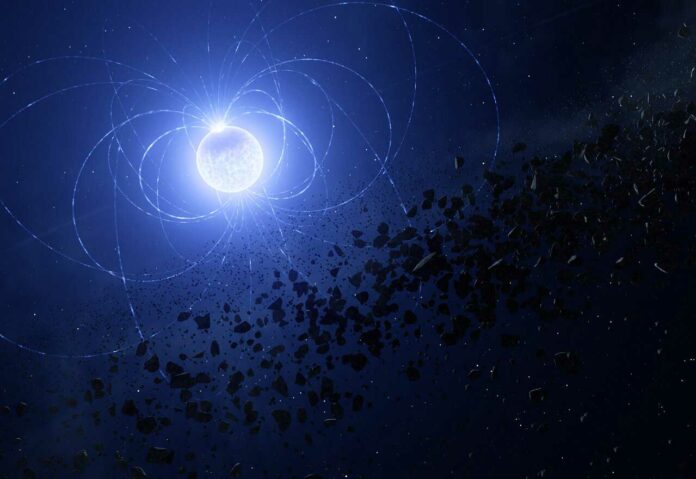Some white dwarf is cannibalizing pieces of their planetary systems. Using the European Southern Observatory‘s Very Large Telescope (ESO’s VLT) in Chile, scientists detected a unique signature of this process for the first time. They detected a scar imprinted on the surface of a white dwarf star.
Scientists have discovered that the star’s magnetic field is vital in this process, resulting in a scar on the white dwarf WD 0816-310’s surface.
White dwarf WD 0816-310 is an Earth-sized remnant of a star similar to, but somewhat more massive than, our Sun. The scar on it is a concentration of metals imprinted on its surface. These metals originate from a planetary fragment as large as or possibly more significant than Vesta, which is about 500 kilometers across and is the second-largest asteroid in the solar system.
The observations also offered insights into the origin of the star’s metal scar. The fact that the metal detection fluctuated in strength as the star spun indicates that the metals are not evenly distributed across the white dwarf’s surface but concentrated in one place.
Additionally, they discovered that these alterations coincided with variations in the magnetic field of the white dwarf, suggesting that this metal scar is situated on one of its magnetic poles. When combined, these hints indicate that the scar was formed on the star by metals being drawn onto it by the magnetic field.
Co-author John Landstreet, a professor at Western University, Canada, who is also affiliated with the Armagh Observatory and Planetarium, said, “Surprisingly, the material was not evenly mixed over the surface of the star, as predicted by theory. Instead, this scar is a concentrated patch of planetary material, held in place by the same magnetic field that has guided the infalling fragments.”
“Nothing like this has been seen before.”
Scientists used a ‘Swiss-army knife’ instrument on the VLT called FORS2, which allowed them to detect the metal scar and connect it to the star’s magnetic field.
Stefano Bagnulo, an astronomer at Armagh Observatory and Planetarium in Northern Ireland, UK, and lead author of the study, said, “ESO has the unique combination of capabilities needed to observe faint objects such as white dwarfs and sensitively measure stellar magnetic fields.”
Journal Reference:
- Stefano Bagnulo, Jay Farihi et al. Discovery of Magnetically Guided Metal Accretion onto a Polluted White Dwarf. The Astrophysical Journal Letters. DOI 10.3847/2041-8213/ad2619
